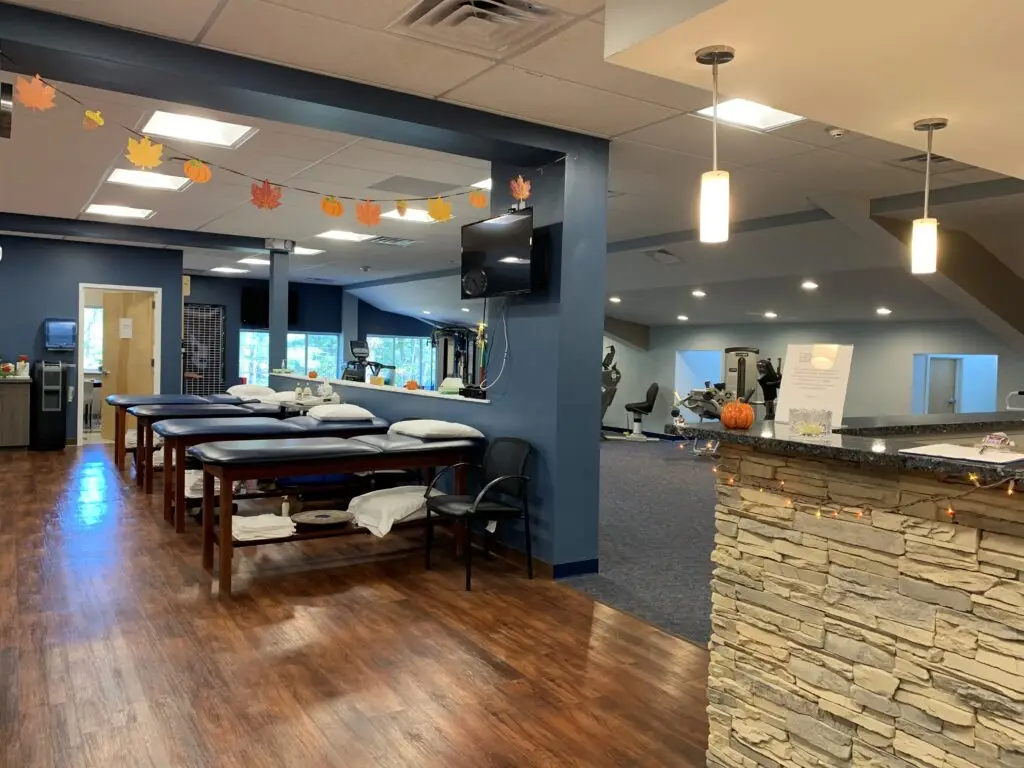If you are having shoulder pain and have had a traumatic event involving your shoulder, you may have a shoulder dislocation. A shoulder dislocation in NJ, NY & FL occurs when the ball and socket that make up the joint come apart. If the ball comes out of the socket and stays out, then it is considered a true dislocation. If the ball comes out of the socket and then quickly goes back into place, it is considered a shoulder subluxation.
In either case, injury to the surrounding shoulder structures may have occurred.
Common Causes of a Shoulder Dislocation
The most common cause of a shoulder dislocation or subluxation is a traumatic event. This may be caused by a forceful blow from the side or from behind your shoulder during athletic activity. A fall on an outstretched hand may also cause your shoulder to separate. Some people are born with a condition that causes joints in the body to be loose. This may cause shoulder multidirectional instability (MDI), which may lead to frequent shoulder subluxations.
Initial Treatment for a Dislocated Shoulder
If you have had trauma to your shoulder and suspect that it has been dislocated, you must seek medical attention right away. For a true dislocation, your doctor must reduce the dislocation, which means he or she will reposition your shoulder socket in the correct place.
It is possible to dislocate the shoulder in many different directions. Most commonly, your shoulder will dislocate to the front, called an anterior dislocation. Occasionally, the dislocation will occur to the back, called a posterior dislocation. Your shoulder may also be pulled down and out of the socket, and this is called an inferior dislocation.
If you have suffered a shoulder subluxation, your doctor can help you determine if you have damaged any muscles, tendons, or ligaments around the shoulder. Your doctor may take an x-ray of your shoulder after a dislocation to see if any bones around your shoulder have broken. Occasionally, a proximal humeral fracture may result from a traumatic dislocation of the shoulder. Another injury to the shoulder called a Hill-Sachs lesion may occur as the result of a shoulder dislocation or subluxation. In this case, the smooth cartilage of the shoulder joint is damaged.
Other diagnostic testing, such as an MRI, may be done on your shoulder to see if you have injured any other structures around the joint. Common shoulder injuries after a dislocation or subluxation include, but are not limited to:
• Rotator cuff tear
• Labrum tear
• Fracture
• AC Joint Separation
Once your shoulder joint has been placed in the correct position, it is likely that you will be required to wear a sling on your shoulder. This is to help you keep your shoulder in the correct position so that proper healing can take place. Be sure to ask your doctor what is expected of you while wearing your sling.
A visit to your local physical therapist may be necessary at this time to ensure that you are wearing your sling properly. He or she can also instruct you in proper pendulum exercises to help prevent a frozen shoulder from happening.
What to Expect from Physical Therapy
After a dislocated shoulder, your doctor may refer you to physical therapy to help you regain normal use of your arm. Your first visit to your physical therapist will likely be an initial evaluation where your physical therapist will collect information about your injury. He or she will also ask you about your pain level and your functional loss as the result of your injury. Your medical history should also be reviewed to ensure you have a safe physical therapy experience. Be sure to be open and honest with your physical therapist and ask questions about your condition if you have any.
Your physical therapist will most likely take some measurements of how your body is moving during the initial evaluation.
Common impairments that are measured after a shoulder dislocation include, but are not limited to:
• Pain
• Range of motion
• Strength
• Posture
• Function
• Special tests for the shoulder
Once your physical therapist gathers information about your shoulder, proper treatment can be started. Common treatments and exercises that you may experience in physical therapy include:
Range of motion: If you have been wearing a sling after a traumatic dislocation of your shoulder, you may feel tightness around your shoulder. Range of motion exercises may be started to help you regain normal mobility around your shoulder. Care should be taken not to stretch too far; the structures supporting your shoulder may become too loose and a recurrent dislocation may occur if the range of motion exercises are too aggressive.
If your shoulder dislocates or subluxes as the result of multidirectional instability and no trauma has occurred, you may not need to wear a sling. Therefore, your shoulder may not be tight, and performing range of motion exercises may not be necessary. In fact, aggressively stretching a shoulder that is already “loose” may cause more harm than good. Be sure to follow the advice of your physical therapist and ask questions if you have any.
Strength: One of the most important components of a physical therapy program after a shoulder dislocation is to restore normal strength in the shoulder muscles. This can help provide stability to your shoulder so that normal function can be regained.
Muscles groups that should be the focus of your strength include the rotator cuff muscles, the muscles of the arm like the biceps and triceps, and the muscles that support the shoulder blade. Your physical therapist and doctor should guide you and ensure that you are performing your strength exercises properly.
Occasionally, the muscles around your shoulder are not able to contract properly. Your physical therapist may choose to use an electrical stimulation device called neuromuscular electrical stimulation (NMES) to help your muscles along in this process. Be sure to follow your physical therapist’s instruction when using the NMES device, and ask questions if you have any. In general, NMES can help your muscles contract, but the device should not take the place of active exercise for the muscles around your shoulder.
Posture: Poor posture, like a rounded shoulders posture, may prevent the shoulders from functioning properly. By learning to attain and maintain proper posture, you can be certain that your shoulder is in the best possible position to function the way it is meant to.
Pain: After a shoulder dislocation, you may be feeling significant pain. Bruising may be present as well. Your physical therapist can help you control pain with treatments like heat or ice. Historically, physical therapists have used treatment modalities like ultrasound or TENS to help with your pain, but most scientific research does not support the use of these devices. If you do use these, be sure to ask questions about their use, and make sure that you are also performing active exercises to help your shoulder move and feel better.
How Long Will Therapy Take?
While every injury is different and everyone heals at different rates, normally your shoulder should be back to normal in about eight to 12 weeks. If the injury to your shoulder is severe, your healing may take longer, or you may require shoulder surgery to help stabilize the problem. Your doctor and physical therapist should work together to ensure that you are progressing with your rehabilitation, and they should make recommendations to alternative treatments if you are not making gains with your shoulder.
Bottom Line
After a shoulder dislocation or subluxation, your shoulder will feel very unstable. There may be weakness in the muscles around your shoulder, and you may feel pain in the shoulder or arm. All of these problems may lead to the loss of normal use of your shoulder and arm. Physical therapy after a shoulder dislocation can help you decrease pain and regain normal strength and mobility around your shoulder so you can return to normal function quickly and safely.
Please do not hesitate to get in touch if you have any questions about either our treatment process or your condition.
Please contact your SportsCare Physical Therapy location to schedule an appointment.
We look forward to meeting you.
By Brett Sears, PT – Reviewed by a board-certified physician.
Updated June 30, 2016
At SportsCare we understand that your pain may need urgent care. It is our policy to schedule an appointment within 24 to 48 hours. Easily request an appointment below, or call the facility nearest to you to speak with someone from our team!
Customized Treatment Plans
Physical Therapy is an important and necessary way for people to recover. The key to success for every therapy program is individualization, and at SportsCare Physical Therapy we see each of our patients as individuals. With a customized treatment plan that is unique to each patient, our therapists are able to address all of their patients’ specific needs!
At SportsCare we verify your insurance immediately, at no cost to you, so you’re fully aware of your responsibilities way before your first visit. It’s just one more step that we take to ensure that you have the best care possible.




